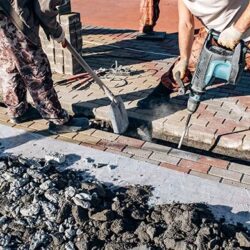If you live in or near Wollongong, you know the weather can vary, coastal breezes, cooler evenings, sometimes harsh sun. Your hot water system needs to handle these variations reliably. When troubles begin, you’ll want to know what to expect in a proper Hot Water System Replacement, what to look for, what types to pick, and how costs typically work out.
Key Signs That Replacement Is Needed
Watch out for these red flags:
- System age beyond 10‑15 years.
- Hot water supply that runs out quicker than it used to, or takes longer to recover.
- Water that’s rusty, discoloured, or smells metallic.
- Strange noises like banging, popping or gurgling – often from sediment at bottom of tank.
- Leaks or pools of moisture around tank base or connections.
- Rising power or gas bills, suggesting inefficiency.
Matching Your Replacement to Local Needs
Because of Wollongong’s climate and lifestyle, certain features are more important:
- Durability in coastal environments: Humid air and salt can accelerate corrosion, materials, coatings and unit design should account for that.
- Good insulation: Keeps water hot even when ambient temperatures drop, reducing heating cycles.
- Efficient energy use: With local electricity and gas costs, choosing efficient models offers real savings. Heat pumps or solar options are often strong choices.
- Space constraints: Many homes in Wollongong are limited in space; continuous flow units or compact heat pump cylinders may be preferable.
Types of Systems & Their Pros/Cons
- Electric storage tanks: simple, familiar, relatively low upfront costs; higher running costs, especially if poorly insulated.
- Gas storage or continuous flow: faster heat, strong supply; requires gas lines or infrastructure; may have higher installation complexity.
- Heat pumps: high upfront cost; efficient and lower running cost over long period; quieter models are available.
- Solar‑boosted systems: during sunny seasons, big savings; less effective in darker/wetter days, so often used in combination with another heating method.
What Replacement Costs Include
In Wollongong, these are the typical cost items to factor in:
- Cost of the unit itself (type, capacity, brand).
- Labour for removal of old system, plumbing or gas work, electrical or venting work.
- Permit or compliance fees if needed.
- Disposal of old unit.
- Additional materials: pipes, valves, insulation.
- Ongoing running costs (electricity, gas, maintenance).
Smart Choices & Best Practices
- Choose a system with sufficient capacity to meet peak usage: morning showers, multiple occupants, appliance load.
- Prioritise models with good warranty and after‑sales support.
- Consider energy efficiency ratings: lower running costs often make up for higher initial investment.
- Talk with installers familiar with Wollongong’s conditions: coastal exposure, humidity, salt etc.
- Try to choose a system with flexibility for future changes (if family grows or usage changes).
Final Thoughts
A thoughtful Hot Water System Replacement in Wollongong is more than just swapping old for new. It’s about choosing something that lasts, performs well in your specific climate, and keeps costs manageable now and over time.
When it comes to hot water systems, paying attention to early warning signs can save homeowners both time and money, while ensuring uninterrupted comfort. Systems don’t usually fail overnight; they often show subtle indications that replacement may be necessary. Leaks, corrosion, rust, fluctuating temperatures, strange noises, and frequent maintenance requirements are all red flags that your system may be nearing the end of its useful life. Recognising these signals early gives you the advantage of planning a replacement on your own terms, rather than reacting to an emergency.
Timing your replacement carefully can make a significant difference in both cost and convenience. For instance, installing a new system during milder seasons is often easier than trying to schedule an installation in the middle of winter, when demand for tradespeople is at its peak. During peak seasons, waiting times can be longer, and emergency call-out fees can quickly inflate the cost. By planning ahead, you can secure a reputable installer, choose the best system for your household, and avoid the stress of rushed decisions.
Another major benefit of proactive replacement is the opportunity to upgrade to a more efficient, modern system. Today’s hot water systems—whether gas, electric, solar, or heat pump models—are designed to deliver better energy efficiency, consistent performance, and longer lifespans. Older systems often operate below current standards, wasting energy and running up utility bills. By investing in a modern unit, you’re not only reducing long-term costs but also improving your home’s environmental footprint. Energy-efficient systems with smart controls can heat water more precisely, helping you avoid unnecessary wastage while ensuring hot water is available exactly when needed.
Beyond efficiency, a timely replacement improves daily comfort and household convenience. No one wants to face a cold shower due to a failed water heater or to cope with inconsistent water pressure during busy mornings. Upgrading your system proactively guarantees reliability, so your household routines remain smooth and stress-free. You also avoid the risk of water damage from leaks or flooding caused by sudden system failure—a problem that can lead to expensive repairs and added disruption.
Finally, planning your replacement gives you the opportunity to choose a system tailored to your home’s specific needs. Whether it’s a compact unit for a smaller household or a high-capacity system for a family with heavy hot water usage, selecting the right size and type ensures optimal performance.
In summary, by monitoring warning signs such as leaks, age, and maintenance frequency, and by planning ahead, you can make your hot water system replacement smooth, cost-effective, and long-lasting. With careful selection and timely installation, you’re not just replacing an appliance—you’re investing in comfort, efficiency, and peace of mind for years to come.




